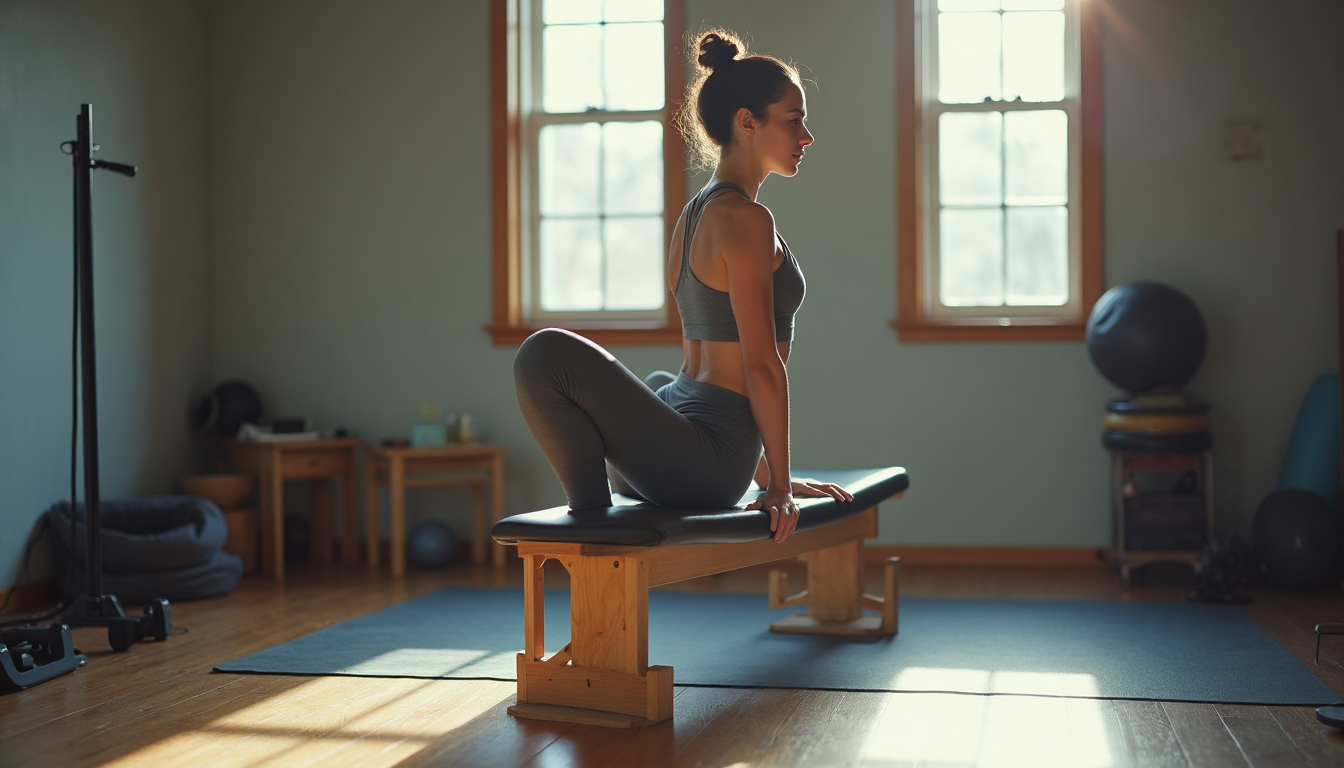The Unglamorous Truth About Building Strong Glutes

The Unglamorous Truth About Building Strong Glutes
Let me paint you a picture: It's 2019, I'm hunched over my laptop for the tenth hour straight, and my lower back feels like it's being slowly tortured by tiny demons with pitchforks. My glutes? What glutes? They'd basically gone into hibernation mode from years of sitting, leaving my poor back to do all the heavy lifting.
Fast forward to today, and I can deadlift my bodyweight without my back screaming at me. The secret wasn't some revolutionary Instagram workout or a $200 resistance band that promises to "transform your booty in 30 days." Nope. It was three embarrassingly simple exercises that honestly look kinda weird when you're doing them.
Here's What Nobody Tells You About Glute Training
The fitness industry has convinced us that building strong glutes requires elaborate setups, perfect form that takes months to master, or workouts that leave you crawling up the stairs. But here's the thing - most of us don't even know how to turn our glutes ON, let alone make them stronger.
I spent months doing squats and lunges, wondering why my thighs were getting stronger while my butt remained... well, let's just say it wasn't doing its job. Turns out, when your glutes have been on vacation for years, you need to wake them up before you can work them out.
That's where these three exercises come in. They're not sexy, they won't get you tons of likes on social media, but they actually work. And by "work," I mean you'll feel muscles you forgot you had.
Exercise #1: Hip Thrusts (AKA The Awkward Humping Motion)
Yeah, let's just get this out of the way - hip thrusts look ridiculous. You're basically dry humping the air while lying on a bench, and if someone walks into the gym at the wrong moment, there will be some explaining to do.
But here's why I don't care about looking silly: this exercise single-handedly saved my lower back.
Why hip thrusts actually work:
- They isolate your glutes in a way that squats just can't
- Your glutes are in their strongest position at the top of the movement
- You can really focus on squeezing and holding, which teaches your brain to actually USE these muscles
How to do them without overthinking it:
Start simple - forget the barbell for now. Just use your body weight and maybe throw a resistance band around your thighs if you're feeling fancy.
- Sit with your shoulder blades against a bench (or your couch, I don't judge)
- Plant your feet flat on the ground, about hip-width apart
- Take a breath, squeeze your glutes like you're trying to crack a walnut, and lift your hips up
- Hold for a second or two at the top - this is where the magic happens
- Lower down slowly and repeat
The first time I did these, I could barely hold the top position for a second. Now? I can pause for 5+ seconds and actually FEEL my glutes working. It's weird how satisfying that is.
Common mistakes I made (so you don't have to):
- Arching my back at the top instead of using my glutes
- Going too fast and missing the mind-muscle connection
- Placing my feet too far away and turning it into a hamstring exercise
Start with 3 sets of 10-12 reps, focusing more on quality than quantity. Trust me, you'll feel it.
Exercise #2: Weighted Froggers (Yes, That's Really What They're Called)
When my trainer first showed me these, I thought she was pranking me. "You want me to lay on my back and... do what now?" But froggers quickly became my favorite glute activation exercise because you literally cannot cheat them.
The position forces your glutes to do all the work. Your hip flexors can't take over, your back can't compensate - it's just you, your glutes, and gravity.
Why froggers are genius:
- The foot position (soles together) targets the glutes perfectly
- You can't use momentum to cheat
- They're weirdly meditative once you get the hang of them
How to do them:
- Lay on your back in a glute bridge position
- Bring the soles of your feet together and pull your heels as close to your butt as possible (hence the "frogger" name)
- Flatten your lower back against the floor
- Bridge up, squeezing your glutes at the top
- Lower down slowly
I like to do these as a warm-up before other exercises - about 10-15 slow, controlled reps. They're also perfect for those days when your energy is shot but you still want to do something for your glutes.
The first few times might feel awkward because your hip flexors are probably tight (thanks, desk life), but stick with it. The range of motion will improve, and you'll start to feel your glutes waking up.
Exercise #3: Clamshells (The Side-Lying Savior)
Clamshells are probably the most boring exercise on this list, which is exactly why most people skip them. But if you've ever dealt with hip pain, knee issues, or that weird clicking sound when you walk up stairs, clamshells might just change your life.
They target the gluteus medius - that smaller glute muscle on the side of your hip that's responsible for keeping your pelvis stable. When it's weak (which it probably is), everything else has to work overtime to compensate.
Why clamshells matter:
- They strengthen the often-neglected side glutes
- Improve hip stability for better movement in general
- Can be done literally anywhere - no equipment needed
How to do them right:
- Lie on your side with your hips stacked
- Bend your knees to about 90 degrees
- Keep your feet together and lift your top knee toward the ceiling
- Hold for a second, then lower slowly
The key is keeping everything aligned - no rolling backward or letting your pelvis tilt. It's a small movement, but when done correctly, you'll feel it in exactly the right spot.
I usually do these during TV commercial breaks or while scrolling through my phone. They're perfect for those moments when you want to be productive but not, you know, actually work out.
Pro tip: Add a resistance band around your thighs once bodyweight becomes too easy. But start light - these are harder than they look.
The Reality Check: What to Actually Expect
Let's be honest about timelines here. I didn't wake up after a week with a completely different backside. In fact, for the first couple of weeks, I wasn't sure anything was happening at all.
But around week three, I noticed something interesting - my lower back stopped hurting after long days at my desk. By week six, I could actually feel my glutes engaging during squats instead of just hoping they were working. And after a few months? My jeans started fitting differently in the best possible way.
Here's what helped me stay consistent:
Start stupidly small. I began with just 5 minutes, three times a week. Not because I couldn't do more, but because I knew myself well enough to know that if I started with hour-long workouts, I'd quit after a week.
Focus on feeling, not counting. Instead of obsessing over reps, I focused on actually feeling my glutes work. Some days that meant doing fewer reps but with better control.
Mix them into existing routines. I'd do clamshells while watching Netflix, hip thrusts during my regular gym session, and froggers as a warm-up. Making them part of what I was already doing removed the barrier of "finding time to work out."
The Unsexy Truth About Building Strength
Here's what the fitness industry doesn't want you to know: the most effective exercises are usually the most boring ones. They don't make for exciting workout videos or dramatic before-and-after photos. They're just... reliable.
These three exercises won't give you an Instagram-worthy butt overnight, but they will give you something better - glutes that actually function. Glutes that support your lower back, stabilize your hips, and make everyday movements feel easier.
And honestly? That's way more valuable than looking good in yoga pants (though that's a nice bonus too).
A few final thoughts:
- Your glutes have probably been asleep for a while, so be patient with the wake-up process
- Consistency beats intensity every single time
- If something hurts (not muscles working, but actual pain), stop and maybe consult someone who actually knows what they're talking about
- Progress isn't always linear - some days will feel easier than others
I'm not a trainer, and I'm definitely not claiming these three exercises will solve all your problems. But they solved mine, and I've seen them work for plenty of other people who were dealing with similar issues.
So maybe give them a shot? Start small, be consistent, and see what happens. Your lower back (and your future self) might just thank you.
What's your experience with glute training? Have you tried any of these exercises, or do you have other favorites that actually work? Drop a comment - I'd love to hear what's worked (or spectacularly failed) for you.




